More Development and Less Bureaucracy
Renewable energy: experts discuss trends and challenges
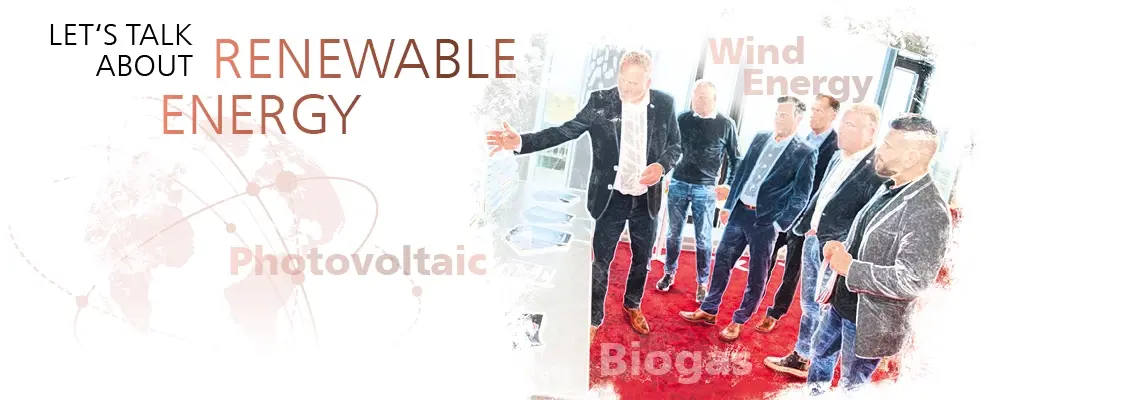
The comprehensive transition to renewable energy sources is one of the greatest challenges of our time. Along the way, however, many technical, political, and societal hurdles must be overcome. What these hurdles look like, what solutions are necessary to overcome them, and why renewable energy is vital for our future - these are the topics covered in our latest expert roundtable.
Sun, wind, water, biomass - renewable energy can be created from many different sources. What pros and cons do each of these energy sources offer and how are they best utilised for energy production?
Andreas Kulke: Currently, for us, solar and wind energy have the highest potential. However, they are very volatile in their production. This means that the amount produced fluctuates depending on the time of day or season. To use this energy as efficiently as possible, it needs to be stored with the help of storage devices or pumped storage power stations, which are currently being built in the Alps. Biomass, on the other hand, is constantly available and can be turned into electricity and heat in combined heat and power plants (CHP). This is especially useful since heat and power can be used simultaneously in the food service, hotel, and agricultural industries, as well as in swimming pools. Generally speaking, storability is the key to increasing our usage of renewable energy and reducing our dependence on fossil fuels.
Hendrik Becker: In my view, biomass is the ideal complement to wind and solar energy. When it comes to gas input or fuel production, biogas plants are flexible, versatile, and sustainable in conjunction with a CHP. Furthermore, energy is able to be stored seasonally in the form of biomass. In the summer, when plenty of wind and sun are available, energy is stored to be used in winter when other providers fall behind on energy production. Even large natural gas caverns are suited for the storage of biogas. The only drawback is that every method of storage costs money.
Jürgen Scheurer: All forms of renewable energy have their value. Even if they aren't very prominent in public debate, wood-based energy and hydropower shouldn't be ignored. Individual energy sources also shouldn't be pitted against one another; they should be considered and elaborated upon in unison - preferably as quickly and at the largest scale possible.
In Germany, the expansion of renewable energy is heavily dependent on political decisions. What kind of effects does this have on the market?
Becker: For better or for worse, the market is heavily influenced by funding. If the government offers financial incentives for the development of a certain energy source, the demand usually increases accordingly. If these incentives expire, demand decreases just as quickly. Producers and installers break off their contracts and jobs are threatened.
Scheurer: A good example of this would be the Ministry of Transport's subsidy program for photovoltaic systems last year. There were 300 million Euros in funding, and it was all gone in four hours. Many contracts were delayed waiting on this financial support. This was a big problem for companies that had already hired and trained new employees and stocked their warehouses. These measures are well intentioned, but short-sighted.
Kulke: E-Mobility experienced something similar. In 2021 and 2022, the construction of charging stations was being supported financially and the contract conditions were relatively good. Then, the funding stopped and the demand crashed. This caused some manufacturers to go bankrupt.
With such volatility in demand, how can businesses in the industry even plan effectively?
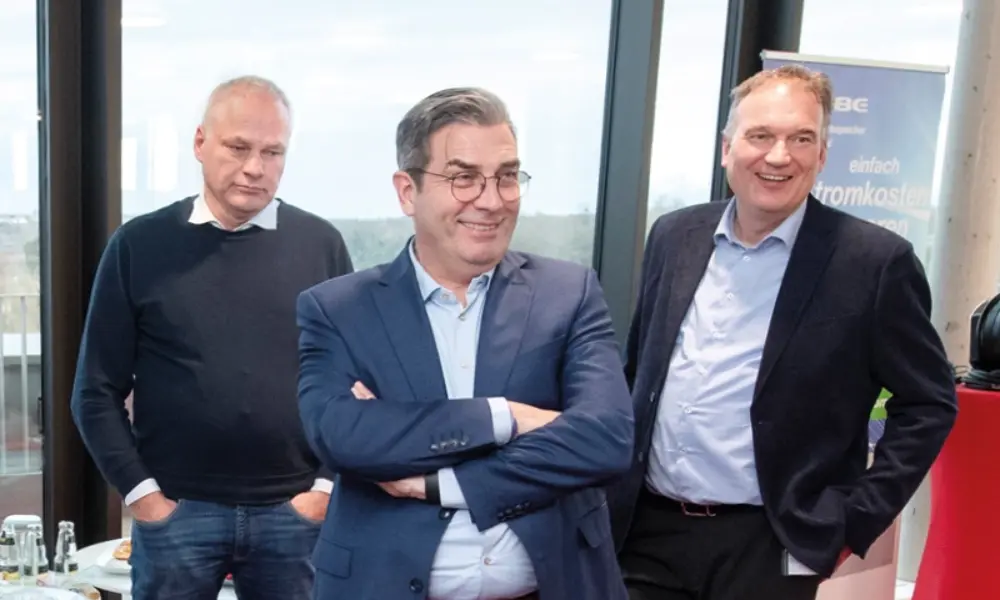
The experts all agreed: The expansion of renewable energies must be accelerated and simplified.
Anton Wissing: Planning is, as a matter of fact, an immense challenge. Between 2012 and 2014, when sales of all renewable energies collapsed, our company, B&W Energy, was forced to reduce its workforce from 150 to 40 employees. This can't be the proper way to do things. In that timeframe, the industry lost a total of 80,000 jobs. Meanwhile, jobs are always used as an argument in preservation of the fossil fuel industry. In my opinion, there is often a double standard here.
Uwe Schenk: The lack of security in planning is also difficult for us vendors. We may be able to secure availability through our large warehouse inventory of cables and wires, but it is very difficult for us to accurately predict demand.
Ali Gökdogan: The current demand for photovoltaics is relatively low because the manufacturers' and installers' warehouses are full. We are, however, expecting demand to increase due to the number of large solar parks whose approval proceedings are nearing completion.
Wissing: It's clear that we need more reliability from the government. We're currently receiving many positive signals, but this needs to happen far more often. And what happens if the next election results in politics changing gears? Our industry is clearly too reliant on these decisions.
Alongside political uncertainty, high bureaucratic hurdles need to be overcome to expand renewable energy. What challenges do you foresee here, and how do you see them being overcome?
Scheurer: Companies are hoping primarily for a reduction in bureaucracy, resulting in better security in planning. Plant certifications take too long, but so do approvals from network operators and the actual connections. In Germany, there are around 800 different network operators and each has their own registration forms and online platforms. This needs to be harmonised and simplified.
Becker: Even heating contractors have difficulties with bureaucracy. The regulations for oil-fired heating systems are defined and understood. An installer can plan and install an oil tank for a private residence in a few weeks. Whereas with heat pumps or geothermal heating, the application process can take months, which, of course, makes these unattractive for installers.
For biogas plants, it can take up to two years to connect to the network. It's because the network operators used to be worried about disruptions and competition. This is also why the infeed of hydrogen was made so difficult. Luckily, people have gotten past that. Doing away with old rules, however, is a long and difficult process.
Wissing: The combination of wind and solar parks is just as complicated of an endeavour. This combination has the advantage of being able to utilise existing infrastructure twice as effectively. These kinds of plans often fail to be approved because areas zoned for wind farms are not allowed to have solar plants built on them. Unfortunately, people don't understand that the two can function together.
Network infrastructure plays a critical role in the success of the transition to renewable energy. What shape is the energy transition currently in, and what needs to done to improve this in the future?
Gökdogan: The network infrastructure in Germany has a lot of bureaucracy and is sometimes poorly constructed. In my opinion, it will be a while until it's stable enough that new solar projects can be approved and connected to the network quickly and straightforwardly. We must also consider that some components are difficult to come by, which is why some plants take longer to be completed.
Wissing: There are also problems with the construction of transformer stations. Every time, these need to be planned and designed from the ground up because every network operator has their own requirements. This comes at great cost. Why are there no uniform standards?
Becker: Expanding the network is a bottleneck for all renewable energy. Because this topic is so complex, it makes lobbying for it just as complex. For example, with the expansion of power plants, gas-burning power plants intended to utilise hydrogen are the first to be lobbied for and built. At the same time, biogas plants, which are cheaper and more flexible, are going offline in droves. In my opinion, the government doesn't consider the potential of this ever-developing technology quite enough.
Scheurer: Biogas plants are also an attractive solution for local heating grids and, in rural areas, could replace oil and gas heating. Large network operators normally have little interest in expanding heating networks in rural areas. Local initiatives could remedy this.
Becker: Absolutely. The transition to renewable energy must also be viewed from a societal perspective. Renewable energy is usually produced in rural areas, and then used in industrial, urban areas. Rural areas must be able to produce multiple times more energy than they use in order to also supply cities. The electrical grid needs to be altogether more decentralised.
Wissing: Rural energy production also has an economical use in communities. By building civic wind parks, local structures are also built, which are good for the entire community.
Germany wants to reduce its CO2 emissions by at least 65 percent by 2030 and be completely greenhouse-gas-neutral by 2045. In regard to this, are we on the right track?
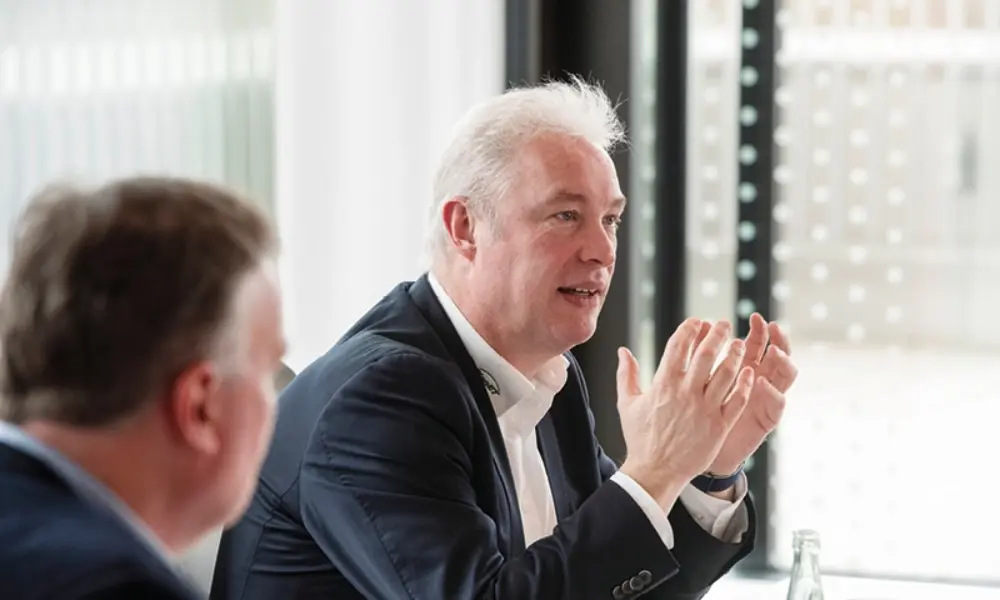
This HELUKABEL expert roundtable centered around the technical, political, and societal challenges posed by the transition to renewable energies.
Scheurer: I wouldn't say so. The problem is: Germany switched off nuclear power plants and agreed to phase out coal without having an adequate replacement ready. Recent studies show that climate goals will be difficult to achieve. Here, in Baden-Württemberg, we needed to increase photovoltaic expansion by a factor of seven, which we're doing well with. The situation with wind energy is more dramatic. We would need to build 1,000 plants in five years. So far, we've built just 50.
Wissing: One of our goals needs to be to notably reduce our energy consumption. In many areas, we're already on the right track. For example, e-mobility is proving to be far more efficient than combustion options. The same can be seen in the heating sector with heat pumps. It's worth it to keep pursuing these.
Becker: Aside from reducing CO2 emissions, I'm interested in the question of what we can do to pull existing CO2 out of the atmosphere. Biomass is capable of storing CO2 which can simultaneously be intercepted and liquefied for use in beverage manufacturing or other industrial processes. CO2 can also be stored in caverns or in even deeper ground layers. I am, however, skeptical of its stability. There is also technology capable of separating carbon and oxygen atoms from one another. The pure carbon can then be used to make concrete or fertiliser.
Scheurer: One approach would be to modernise existing plants. New wind plants are often much more productive and efficient than older models. All in all, this is a question of innovative stength. Companies in the industry need to do research and be open to new ideas. I have a good feeling about German inventiveness, especially in Baden-Württemberg. I see a lot of potential for new business models.
Speaking of innovative strength, in the renewable energy sector, which technologies are currently being intensively researched, and what trends do you expect in the future?
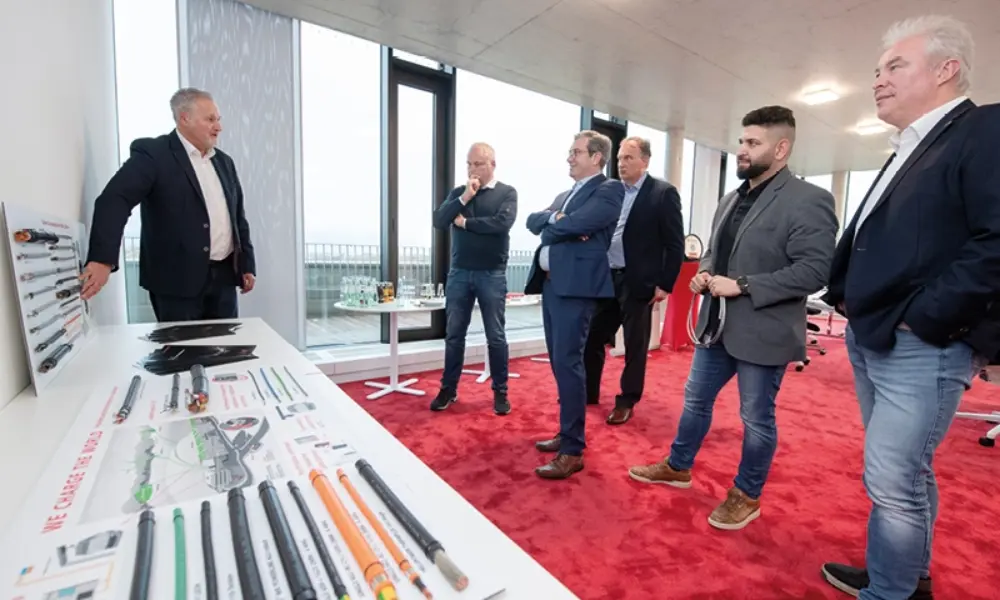
Becker: PlanET, for instance, is very interested in the interconnectedness of sectors. That is to connect the individual electricity, heat, and mobility sub-sectors with one another to use the energy generated as efficiently as possible. The different ways of storing energy play a significant role, specifically in meeting demand in sparser seasons such as winter.
Kulke: In electric mobility, bidirectional charging is a very promising advancement. The idea behind it is that the car battery doesn't just provide the car itself with electricity, but other recipients, too. In practice, this could be a car that is charged with solar energy during the day and then fuels the heat pump at home during the night. This could result in huge potential savings. The problem is that there aren't any uniform standards or regulations for bidirectional charging yet, causing the risks for manufacturers to be very high. Prices, so far, have also not been attractive enough.
Schenk: I would bet that there is still much to be done when it comes to electric car batteries. In the future, they'll become lighter and cheaper with greater ranges. I can also imagine alternative technologies such as a combination of fuel cell and battery.
Gökdogan: In photovoltaics, a current dominant trend is the Agri-PV. This is the simultaneous utilisation of space for agriculture and solar energy production. Different technologies already exist for this, as well as for vertical arrays and for horizontal roofing. Some even feature transparent PV modules. Studies show that with these, in some cases, an even higher yield is possible. Even floating PV-plants are becoming more and more common. This year, we're introducing a special solar cable onto the market that has all of the necessary certifications for this application.
Scheurer: For me, geothermal energy is an exciting and promising means to generate electricity and heat. However, there are often problems with public acceptance, especially with special interest groups specifically campaigning against it. Near bodies of water, it's possible to utilise the heat from rivers via large heat pumps. These could also provide much-needed cooling in the summer months. I think it wise to bring the topics of energy production and environmental protection closer together, as well as educate the public better. This would lead to greater public acceptance for such projects.
Even hydrogen has many uses in energy and heat production, as well as in mobility. What potential do you see here?
Kulke: Hydrogen will play an important role in the transition to renewable energy. Surplus electricity from renewable sources can be converted into hydrogen via electrolysis, which can then be stored, distributed, and made available for users. If the hydrogen is turned back into electrical energy with a fuel cell, the entire cycle remains CO2-neutral. However, with each transformation process, around 40 percent of the energy is lost. This is why I think the fuel cells are too inefficient to offer the auto industry an alternative to electric motors. In other applications, such as in lorries or construction and agriculture machines, utilising hydrogen can be worthwhile. Hydrogen is also promising in extracting process heat for industrial uses, such as in the steel and cement industries.
Scheurer: I agree. Hydrogen as a heat carrier for private customers or in the automobile industry is unrealistic. That's why I don't agree with requiring gas heaters to be H2-ready. Hydrogen is better-suited for use in large-scale industry as well as for storing excess wind and solar energy.
Alongside climate change, geopolitical uncertanties have increased public interest in the energy transition. Is renewable energy now unavoidable from an economic perspective?
Becker: That's correct. The Russian war of aggression against Ukraine has caused many companies to realise that fossil fuels won't always be cheap and readily available. Renewable energy is being increasingly seen as a safe and attractive long-term alternative and a local economic factor.
Scheurer: If electricity prices rise, investments in renewable energy will become more appealing - not just for climate protection, but also for economic reasons. I know of many cases where companies chose one location over another for the sole reason that a renewable energy supply was available there.
Wissing: We all absolutely need renewable energy, not just due to climate change, but to become independent from foreign suppliers. Wind and solar have the greatest potential and must be installed in an intelligent and economically-responsible manner. Other energy carriers such as biomass and hydropower contribute to a failsafe and perpetually-available energy mix. This expansion needs to be as decentralised as possible and will require a country-wide, uniform general framework.
About the participants:
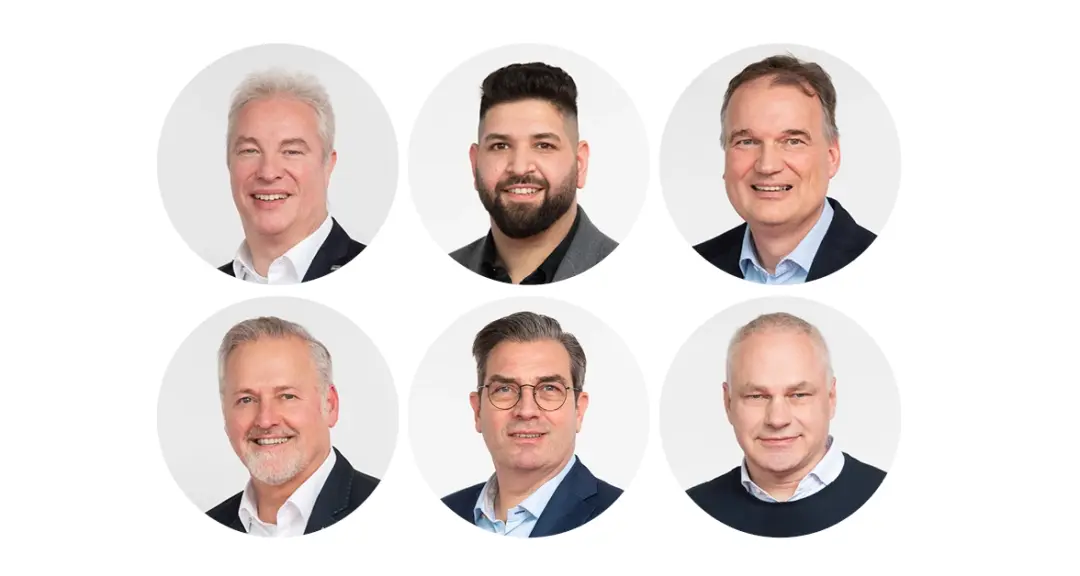
Hendrick Becker is a partner in the PlanET Biogas Group and chairman of the NRW Renewable Energy Association of the Münster regional association. He was also the long-time chairman of the Federal Association for Renewable Energy and vice president of the trade association Biogas.
Ali Gökdogan is the Global Segment Manager for photovoltaics with HELUKABEL and has been with the company for 6 years. Before joining HELUKABEL, he held other positions in the solar industry.
Andreas Kulke is the executive director and founder of alcona Automation Ltd. At first, the company specialised in control systems for agriculture, but now offers wall boxes and other infrastructure for e-mobility, as well as battery storage systems for both the private and commercial sectors.
Uwe Schenk has been with HELUKABEL since 1998. His primary areas of focus as a Global Segment Manager are wind power and e-mobility.
Jürgen Scheurer is the executive director of the platform Erneuerbare Energien Baden-Württemberg. The trade association manages contacts with government ministries, organises trade events, and represents the interests of its member companies.
Anton Wissing has been a wind energy operator for 25 years and took part in the development of many community wind parks. He founded the company B&W Energy 20 years ago, which specialises in photovoltaic plants.
You can also find this and many other exciting articles in the current issue #15 of our customer magazine POWER. Read it now !
